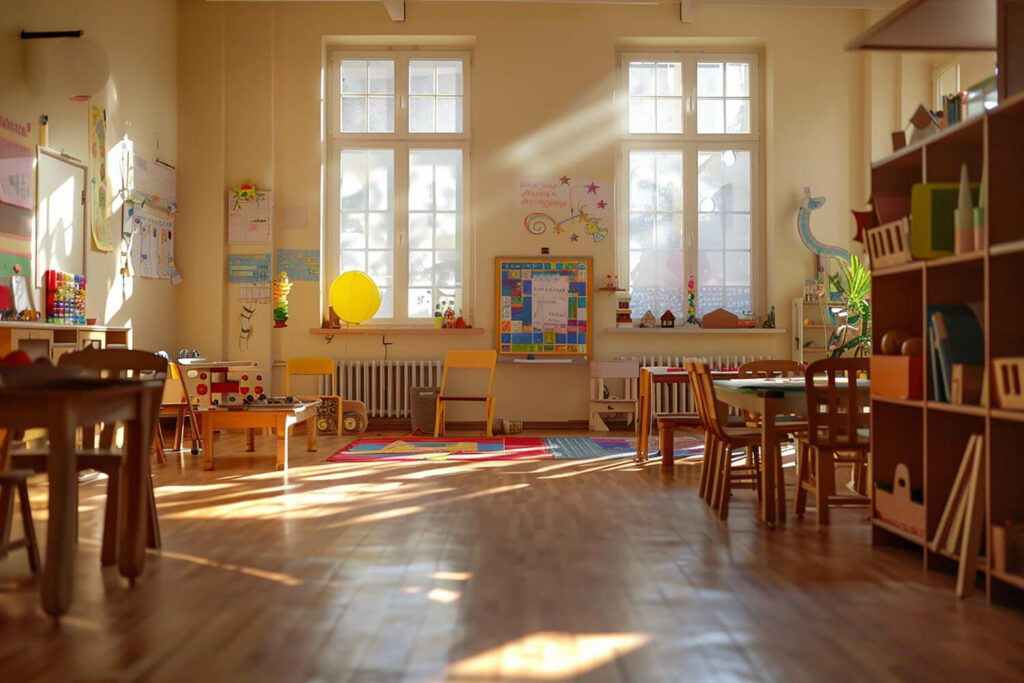Most of us know how kids hate school. But, one way or another, they will need to go back to it. Whether you’re a parent, student, teacher, or just curious, knowing how the school year is structured can help you plan and organize better.
Each state has its on rules on how many weeks in a school year there will be. Some have it at 36 weeks, some at 38, it really depends on the state and school your kid goes to.
What Is a School Year?
A school year is the period during which students attend school to complete an academic curriculum. It typically starts in late summer or early fall and ends in late spring or early summer.
The exact dates can vary depending on the country, state, or even the school district. But one thing is common: the school year is divided into weeks that add up to form the complete academic calendar.
Standard School Year Length
In many places around the world, a standard school year is about 36 weeks long. This number can fluctuate slightly depending on holidays, teacher training days, and other factors that might affect the school calendar. But 36 weeks is a good average to keep in mind.
Typical Weekly Schedule
Most schools follow a five-day week, with classes from Monday to Friday. This means that each school week consists of five days of learning, and students usually get weekends off to rest and recharge.
Over the course of a school year, this five-day structure plays a crucial role in calculating the total number of weeks.
Holiday Breaks
Holidays and breaks are an essential part of the school year. Common breaks include:
- Winter Break: Usually lasts about two weeks around the end of December.
- Spring Break: Typically a week-long break in March or April.
- Summer Break: This is the longest break, marking the end of the school year and the beginning of the next one. It usually lasts around 10-12 weeks.
- Other Holidays: These can include national holidays, local holidays, and special days off for teacher training or conferences.
How Breaks Affect the School Year Length
When you subtract the holiday breaks from the school year, the number of weeks that students actually spend in the classroom comes down to around 36 weeks.
For example, if the school year starts in early September and ends in mid-June, and you account for the various breaks, the total instructional weeks will hover around that average.
Different Countries, Different School Years

United States
In the United States, the school year typically runs from late August or early September to late May or early June.
This gives students around 36 weeks of instruction, spread out over approximately 9 months. The school year is punctuated by several breaks, including Thanksgiving, winter, and spring breaks.
United Kingdom
In the United Kingdom, the school year is slightly different. It usually starts in early September and ends in late July. The school year is divided into three terms, with shorter breaks in between, leading to a total of about 39 weeks of school.
Australia
In Australia, the school year begins in late January or early February and ends in December. It is divided into four terms, each lasting about 10 weeks, with breaks in between. This results in a school year of roughly 40 weeks.
Other Countries
Many other countries follow similar patterns, with slight variations in the number of weeks depending on local customs, holidays, and educational requirements.
Impact of Public Holidays on the School Year
Public holidays play a significant role in shaping the school calendar. Here are some common holidays and their impacts:
- Christmas/Winter Break: Usually spanning two weeks, this break allows students and teachers to celebrate the holiday season and recharge for the second half of the school year.
- Spring Break: Typically lasting one week, it provides a much-needed rest during the spring term.
- Thanksgiving Break (U.S.): A long weekend or a full week in late November, giving families time to celebrate together.
- Easter Break (U.K.): Often coinciding with spring break, this holiday can vary in length from one to two weeks.
These holidays reduce the number of instructional weeks, but they are crucial for maintaining a balanced and stress-free school environment.
Additional Holidays
Beyond the major holidays, schools often observe several other days off:
- National Holidays: These vary by country and can include days like Independence Day, Labor Day, or Memorial Day.
- Local Holidays: These might include regional celebrations or cultural observances unique to a specific area.
- Professional Development Days: Days set aside for teacher training and development, which can add to the total number of days off for students.
How Schools Adjust
To accommodate these holidays, schools might extend the school year slightly or add extra days to the weekly schedule.
Some schools have adopted a “balanced calendar” approach, spreading out breaks more evenly throughout the year to avoid long stretches without holidays.
Regional Differences in School Calendars

United States
In the U.S., the school calendar can vary widely from state to state and even district to district. Some key points include:
- Start and End Dates: While many schools start in late August or early September, some might begin as early as mid-August. The end of the school year is usually in late May or early June.
- Snow Days: In regions with harsh winters, schools build in extra days to account for potential closures due to snow and ice. If not used, these days might be given back as additional holidays.
- Flexible Days: Some districts have flexible days built into the calendar to accommodate unexpected closures or special events.
United Kingdom
The school year in the U.K. is divided into three terms:
- Autumn Term: Early September to mid-December
- Spring Term: Early January to late March or early April
- Summer Term: Mid-April to late July
Each term includes a half-term break of one week, plus a longer break between terms.
Australia
In Australia, the school year starts in late January or early February and ends in December. It is divided into four terms, each around 10 weeks long, with breaks of two to three weeks in between terms.
The longest break is the summer holiday, which lasts around six weeks and falls between the end of one school year and the start of the next.
Other Regions
- Japan: The Japanese school year typically starts in April and ends in March of the following year. It is divided into three terms, with short breaks in between.
- Germany: The school year is divided into two semesters, with a six-week summer break and shorter breaks throughout the year.
Balancing Academic and Personal Life
Breaks are essential for both students and teachers. They provide time to rest, recharge, and engage in activities outside of school. This balance helps improve overall well-being and academic performance.
Parents and students can make the most of the school weeks by staying organized, planning ahead for holidays, and maintaining a healthy balance between schoolwork and relaxation.
Understanding that the number of weeks in a school year can vary based on location and specific circumstances is important. It’s always a good idea to check with your local school district for the most accurate and up-to-date calendar information.
Benefits of Different School Year Structures: Traditional vs. Year-Round Schooling
Traditional School Year
The traditional school year, which typically runs from late summer to early summer with a long summer break, has been the standard for many decades. It generally includes about 36 weeks of school spread over 9 months, with several breaks throughout the year.
Pros
- Long Summer Break: Allows families to plan extended vacations and students to participate in summer camps, internships, or part-time jobs.
- Clear Start and End: Provides a sense of closure and a fresh start each year.
- Cultural Norm: Aligns with traditional schedules for extracurricular activities and family routines.
Cons
- Learning Loss: The long summer break can lead to the “summer slide,” where students forget some of what they learned during the school year.
- Scheduling Challenges: Parents might struggle to find childcare or productive activities for their children during the long break.
Year-Round Schooling
Year-round schooling spreads the school weeks more evenly across the year. Instead of one long summer break, students have shorter, more frequent breaks. This can still amount to about 36 weeks of instruction but is distributed differently.
Pros
- Continuous Learning: Reduces learning loss by having shorter breaks between terms.
- Frequent Breaks: Students and teachers get regular intervals to rest and recharge, which can improve overall well-being and academic performance.
- Flexible Scheduling: Easier for parents to plan vacations and manage childcare throughout the year.
Cons
- Non-Traditional: Can be challenging to adjust for families used to the traditional calendar.
- Extracurricular Conflicts: Some extracurricular activities, especially those that rely on long summer periods (like certain sports camps or programs), may face scheduling conflicts.
- Administrative Costs: Transitioning to a year-round schedule can involve additional administrative costs and logistical adjustments.
Academic Benefits of Different Structures
While the traditional schedule provides a long summer break, studies have shown that students may forget some of what they learned, leading to a period of review at the start of the new school year. This “summer slide” can impact overall retention and progress.
Year-round schooling helps mitigate this issue by reducing the length of breaks. With shorter, more frequent breaks, students are less likely to forget key concepts and can maintain a steady progression in their learning. This can lead to better retention and higher engagement levels.
Teacher and Student Well-Being
The long summer break in the traditional schedule can provide a much-needed rest for both students and teachers, allowing them to return refreshed. However, the long stretch of uninterrupted school weeks can lead to burnout as the year progresses.
Year-round schooling offers more frequent breaks, which can help prevent burnout. Teachers and students get regular intervals to recharge, which can lead to improved mental health and job satisfaction. This structure supports a more balanced work-life dynamic.
Customized Learning Opportunities
The traditional schedule can sometimes feel rigid, with limited flexibility to cater to individual learning needs. Extended summer breaks might be used for remedial classes or enrichment programs, but these are often optional and may not be accessible to all students.
Year-round schooling can provide more opportunities for customized learning. Schools can offer intersession programs during the shorter breaks, which can include remedial help, enrichment activities, or special interest projects. This flexibility supports diverse learning needs and helps all students stay engaged.
Extracurricular Activities and Family Life
The traditional schedule aligns well with many extracurricular activities, which often follow the same calendar. Summer camps, sports leagues, and other programs are usually designed with the traditional school calendar in mind.
Year-round schooling may require adjustments for extracurricular activities. However, it can also offer unique opportunities for programs that run during the shorter breaks, providing students with a continuous outlet for their interests and talents.
Family Life and Vacations
Families used to the traditional schedule often plan vacations and family events during the long summer break. This can be a time for extended travel, family reunions, and other activities that require more time.
Year-round schooling offers more flexibility for family vacations throughout the year. Shorter, more frequent breaks can allow families to take multiple trips or plan activities that fit better with their schedules. This can lead to more balanced and less stressful family time.
Tips and Strategies for Maximizing the School Year

1. Staying Organized Throughout the School Year
Create a Calendar
One of the best ways to keep track of school weeks, holidays, and important dates is to create a comprehensive calendar. Here are some tips to get started:
- Digital or Physical: Choose a digital calendar app or a physical planner based on your preference. Digital calendars can send reminders and sync across devices, while physical planners can be personalized and provide a tactile experience.
- Mark Important Dates: Include start and end dates of the school year, holidays, breaks, exam periods, and special events.
- Regular Updates: Keep the calendar updated with any changes to the school schedule, such as snow days or teacher training days.
Weekly Planning Sessions
Set aside time each week to plan for the upcoming days. This helps in staying on top of assignments, projects, and extracurricular activities.
- Review the Week: Go over what needs to be accomplished, including homework, tests, and activities.
- Prioritize Tasks: List tasks in order of importance and deadline.
- Set Goals: Establish short-term goals for the week to keep motivation high and progress steady.
2. Effective Study Habits
Establish a Routine
Consistency is key to effective studying. Create a daily routine that includes set times for homework, study sessions, and breaks.
- Dedicated Study Time: Allocate specific times each day for studying. This helps in developing a habit and reduces procrastination.
- Breaks and Rest: Incorporate short breaks to avoid burnout. Techniques like the Pomodoro Technique (25 minutes of focused work followed by a 5-minute break) can be effective.
Create a Productive Study Environment
A conducive study environment can enhance concentration and productivity.
- Quiet Space: Find a quiet and comfortable place free from distractions.
- Necessary Supplies: Keep all study materials, such as textbooks, notebooks, and stationery, within reach.
- Good Lighting: Ensure the study area is well-lit to avoid eye strain.
Active Learning Techniques
Active learning techniques can help improve understanding and retention of material.
- Note-Taking: Write down key points during classes and while reading. Summarize notes in your own words.
- Practice Tests: Use practice tests and quizzes to gauge your understanding and prepare for exams.
- Group Study: Studying with peers can provide new insights and make learning more engaging.
3. Balancing Academics and Extracurriculars
Prioritize Activities
Balancing schoolwork with extracurricular activities requires effective prioritization.
- Assess Commitments: List all academic and extracurricular commitments and evaluate their importance and time requirements.
- Limit Overcommitment: Avoid taking on too many activities. Focus on a few that are most meaningful and manageable.
Time Management Skills
Developing strong time management skills is crucial for maintaining a balance between school and other activities.
- Use Timers: Set timers for study sessions and activities to stay on track.
- Block Scheduling: Allocate specific blocks of time for different tasks, ensuring that both academics and extracurriculars get adequate attention.
- Flexibility: Be prepared to adjust your schedule if unexpected events arise.
4. Utilizing School Resources
Academic Support
Schools often provide various resources to support student learning.
- Tutoring Services: Take advantage of tutoring programs offered by the school for subjects you find challenging.
- Teacher Office Hours: Utilize teacher office hours to ask questions and seek clarification on difficult topics.
- Library Resources: Use the school library for access to books, research materials, and a quiet place to study.
Extracurricular Opportunities
Engaging in extracurricular activities can enrich the school experience and develop new skills.
- Join Clubs: Participate in clubs and organizations that align with your interests and passions.
- Sports and Arts: Get involved in sports teams, music, theater, or art programs to explore talents and meet new friends.
- Volunteer Work: Engage in community service projects to give back and gain valuable experience.
5. Maintaining Health and Well-Being
Physical Health
Staying healthy is essential for optimal academic performance and overall well-being.
- Regular Exercise: Incorporate physical activity into your routine to boost energy and reduce stress.
- Balanced Diet: Eat a nutritious diet to fuel your body and mind.
- Adequate Sleep: Ensure you get enough sleep each night to stay alert and focused during the day.
Mental Health
Mental health is equally important and should not be neglected.
- Stress Management: Practice stress-relief techniques such as deep breathing, meditation, or yoga.
- Seek Support: Don’t hesitate to reach out to school counselors or mental health professionals if you’re feeling overwhelmed.
- Social Connections: Maintain healthy relationships with family and friends for emotional support.
Frequently Asked Questions
How many weeks in a school year?
A typical school year consists of about 36 weeks of instruction. This can vary slightly depending on the country, state, or school district, but 36 weeks is a common average.
Do holidays and breaks affect the total number of school weeks?
Yes, holidays and breaks do affect the total number of school weeks. While the school year generally spans around 9 months, the actual weeks of instruction are about 36 when you subtract holidays, breaks, and teacher training days.
What is the impact of year-round schooling on the number of school weeks?
Year-round schooling also generally consists of about 36 weeks of instruction, but the breaks are distributed more evenly throughout the year. Instead of one long summer break, students have shorter, more frequent breaks, which can help reduce learning loss and prevent burnout.
How can parents and students make the most of the school year?
Parents and students can make the most of the school year by staying organized, establishing effective study habits, balancing academics with extracurricular activities, utilizing school resources, and maintaining good health. Creating a calendar, setting weekly goals, and using school support services are also helpful strategies.




